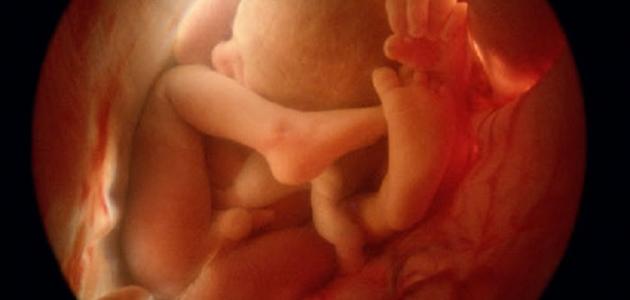Contents
Fetal gender
The gender of the fetus or the sex of the fetus is determined at the time of conception and not in the later stages, as the sperm’s contribution to a (Y) chromosome leads to a male fetus, while its contribution to a type (X) chromosome leads to a female fetus, and in this context it is indicated This indicates that the sperm represents the male reproductive cell or the male gametophyte, and although the sex of the fetus is determined at the beginning of pregnancy, it is only detected in later stages of pregnancy. [1] [2]
Certain ways to find out the gender of the fetus
There are many old claims and myths that were relied upon in the past when predicting the sex of the fetus, and in fact none of these claims have been proven true to date, and they cannot be generalized or scientifically based on them , and science has reached four main methods that enable knowledge The gender of the fetus, and it will be explained in some detail as follows: [3]
Ultrasound
Fetal ultrasound is performed during pregnancy in order to obtain a detailed image of the fetus in its mother's womb and placenta, and this procedure depends on the use of high-frequency sound waves, and enables an examination of the mother's abdomen and pelvic cavity, and this imaging is done through the abdomen Or the vagina , and it is worth noting that this procedure is considered safe for the fetus, and in this context it is indicated that fetal ultrasound has many goals; It enables the doctor to evaluate the health of the fetus’s head and heartAnd his spine, and other parts of the body, in addition to estimating the dates of pregnancy and the expected date of birth, and revealing whether the woman is pregnant with more than one fetus or if she develops any of the complications associated with pregnancy, and it also contributes to determining the location and sex of the fetus. The accuracy of this examination, but the error is possible, and accordingly, it can be said that 100% of the fetus’s sex is confirmed after birth. [4] [5]
In the context of talking about the use of ultrasound imaging in order to know the sex of the fetus, it is indicated that the genitals of the fetus are detected as part of the detailed image of the fetus’s structure and anatomy, and that is during the second trimester of pregnancy. That is, the period between the 18-22 weeks of pregnancy, and in the event that the child's condition allows his gender to be clearly seen, this will be recorded in the report on the woman, and the woman will be informed of the sex of her child if she wants to know this. [6]In general, the fetus must be in a good condition to be heard by obtaining a picture of it, and this includes the presence of the fetus’s feet in a correct position so that it does not cover the genital area of the fetus, and it is worth noting that the mother’s weight also affects the ability to predict the sex of the fetus, and the greater the number of body tissues that must be That the ultrasound is transmitted to it, the images obtained through this procedure were more blurry, and it is indicated that there are many variables that will affect whether the sex of the fetus can be detected at an early time; Like the twelfth week of pregnancy, and in general, predicting the sex of the fetus is more accurate when performing an ultrasound at the twentieth week of pregnancy, and taking into account the possibility of error arising when trying to predict the sex of the fetus using this method, regardless of when it was performed, [1]There are many other cases that limit the information obtained when performing an ultrasound of the fetus, including: Cases in which the size of the fetus is very large or very small and cases in which the amounts of fluid surrounding the fetus are small. [6] In general, there are many signs that doctors detect when performing an ultrasound, and we explain them in some detail as follows: [7] [8]
- Imaging of the genitals: In the past, the images obtained by means of ultrasound imaging were not of high resolution as is the case at present, and in that era, the gender of the fetus was revealed by detecting the presence of an index of the male penis in the image. If this is proven, the sex of the fetus is likely to be male to a large extent, and in cases where the image does not show the presence of a penis, this predicts that the sex is female, noting that the result is not definitive, meaning that it may be correct or wrong, either at the time. With the current development of modern technology, the images obtained by means of ultrasound imaging show the entire parts of the genitals. It is possible to see the scrotumAnd the penis, and testicles in the male sex, and the vision of the vulva, the clitoris, and the labia in the female fetus, and despite this, the time of making the image has an effect on indicating these parts, as the shape and size of the penis and the clitoris are somewhat similar when the ultrasound is performed in The first three months of pregnancy, and therefore the result obtained during this period is largely wrong, and it is necessary to repeat the test in later stages of pregnancy to verify the result.
- Hamburger sign: , also known as the sign of the three lines , as it indicates the emergence of this mark when shooting an ultrasound that the fetus female, so that they look genital organs of the fetus female is similar to a slice hamburger To some extent, because the clitoris is located between the labia, and that is where the name came.
- Turtle sign: , as it indicates the emergence of this mark when shooting an ultrasound that the fetus male, so that the rod tip the male visible from behind the testicles, it is worth mentioning that the age of the fetus and posture play a role in the detection of this mark And if it is not found, it may be resorted to uncover another sign to guide the sex of the fetus.
- Erection of the penis of the male fetus: Although this may seem strange to some when hearing it, it is considered a fact. Penis erection is not limited to adult males only, but may occur in young ones and fetuses, and the erection will be evident if an ultrasound is performed When it occurs, which makes identifying the gender of the fetus easier.
Non-invasive prenatal testing
Noninvasive prenatal testing, also known as Prenatal cell-free DNA screening, is another test performed during pregnancy, and this procedure detects the quantity. The small amount of DNA that is released from the placenta into the bloodstream of the pregnant woman, [9] and it can be performed from the ninth week of pregnancy by taking a sample from the mother’s blood. This test is done mainly to detect the possibility of the fetus having chromosomal abnormalities Like Down's syndrome, Trisomy 13, Trisomy 18 , and if this test shows that the fetus suffers from chromosomal disorders, other tests are required to confirm the result. Such as an examination of the chorionic villus sampling or amniocentesis, which will be explained later in this article, and this test also enables the detection of the Rhesus factor , in addition to the sex of the fetus. So that his sex can be inferred from his chromosome type ; As the presence or absence of the (Y) chromosome, as its presence indicates that the fetus is male while its absence indicates that the fetus is female, [10] [11]It is worth noting that a cell-free DNA test before birth is not performed in all pregnancies, as experts suggest subjecting the pregnant woman to it in cases where her age or genetic history indicates the possibility of the fetus having birth defects, and it is indicated that this procedure is not invasive. Meaning that it is not accompanied by any risks to the mother or the fetus. [12]
Chorionic villus sampling and amniocentesis
The sex of the fetus can be confirmed by performing the chorionic villus examination and amniocentesis along with ultrasound imaging, and it is worth noting that this examination enables the detection of chromosomal abnormalities in the event that the fetus is infected with them, and it is worth noting that both of these tests have very accurate results with the possibility of They are performed in the early stages of pregnancy, and each examination can be explained in some detail as follows: [13] [10]
- Chorionic villus examination: It can be performed from the eleventh week of pregnancy, and is performed by inserting a needle through the abdomen or vagina under ultrasound guidance, so that a small portion of the placenta is then removed and laboratory examined as necessary.
- Amniocentesis: It can be performed from the fifteenth week of pregnancy, as it is performed by inserting a needle through the abdomen under the guidance of ultrasound, so that a small amount of the amniotic fluid surrounding the fetus is taken. That is, about 10 milliliters or less than 5-10% of the total of this liquid, as it is then sent to the laboratory for the necessary tests.
In this context, it is indicated the need to consult a doctor about the matter and discuss whether the chorionic villus examinations and amniocentesis are appropriate and safe for women, as these genetic tests may carry some risk, as they increase the risk of miscarriage , and therefore they are not performed in all cases; But in certain cases, specifically: pregnant women over the age of 35, and spouses who have a family history of genetic disorders, or they may be resorted to in order to confirm the positive result obtained when performing a non-invasive prenatal test. [13] [7]
References
- ^ A b "Gender Prediction" , Utswmed.org , Retrieved July 05, 2020. Edited by .
- ↑ "sperm" , www.medicalnewstoday.com , Retrieved June 05, 2020. Edited.
- ↑ "How can I tell if I'm having a boy or a girl?" , www.babycentre.co.uk/x559360 , Retrieved June 05, 2020. Edited.
- ↑ "Fetal Ultrasound" , Fetal Ultrasound , Retrieved June 05, 2020. Edited.
- ↑ "ultrasound" , americanpregnancy.org , Retrieved June 05, 2020. Edited.
- ^ A b "Fetal Ultrasound" , Www.healthlinkbc.ca , Retrieved July 05, 2020. Edited by .
- ^ A b "How To To the Find Baby's the Out Telling During Pregnancy? 3 (More Or Less) the Precise Methods" , Flo.health , Retrieved July 05, 2020. Edited by .
- ↑ "Ultrasound Signs for Determining Baby's Sex" , www.verywellfamily.com , Retrieved June 05, 2020. Edited.
- ↑ "Prenatal Genetic Screening Tests" , www.acog.org , Retrieved June 05, 2020. Edited.
- ^ A b "Gender Predictor Test: Baby Boy or Girl?" , www.babymed.com , Retrieved June 05, 2020. Edited.
- ↑ "Prenatal cell-free DNA screening" , www.mayoclinic.org , Retrieved June 05, 2020. Edited.
- ↑ “Predicting Baby's Gender” , www.whattoexpect.com , Retrieved June 05, 2020. Edited.
- ^ A b "To How To Tell of a Baby's Telling On The Ultrasound" , Www.verywellfamily.com , Retrieved July 05, 2020. Edited by .






